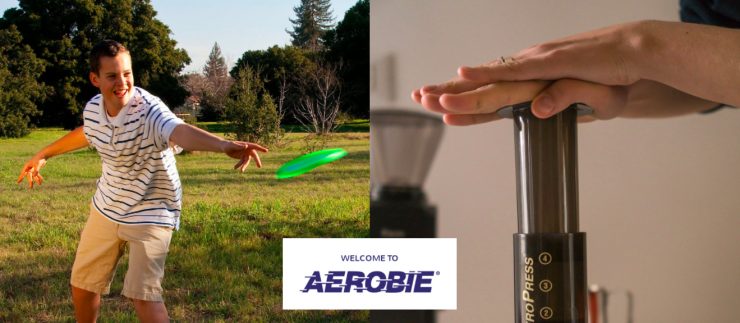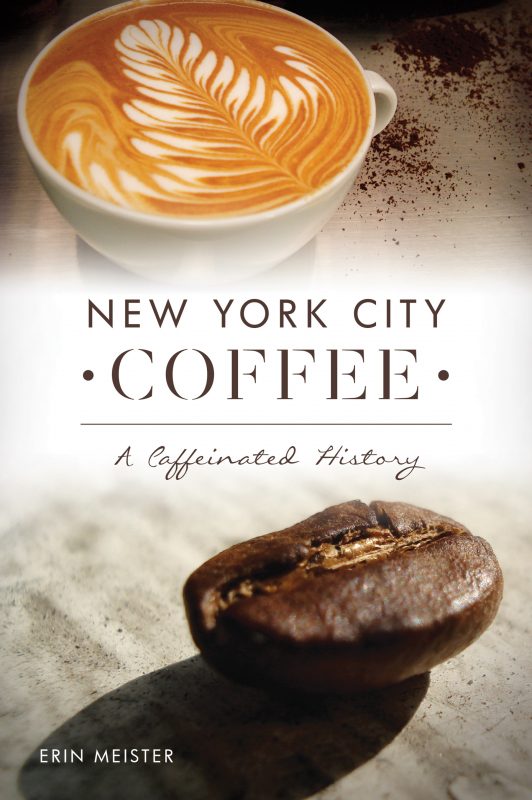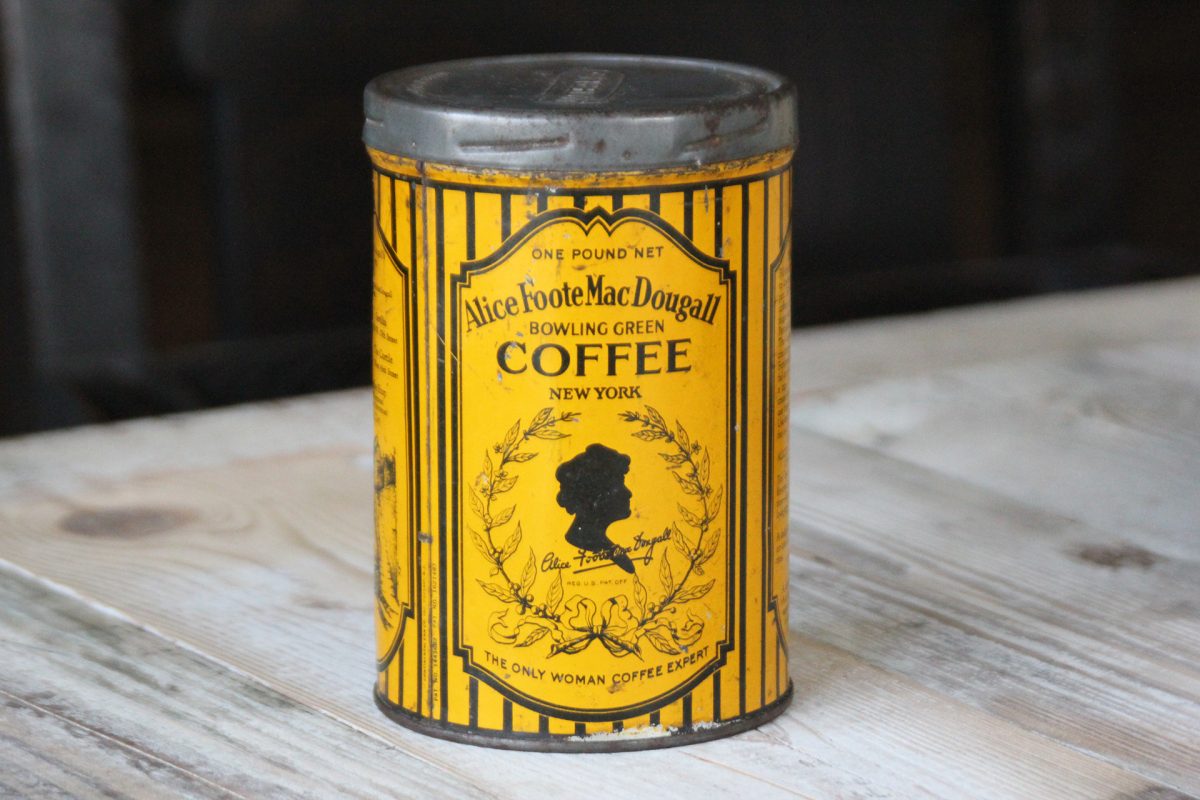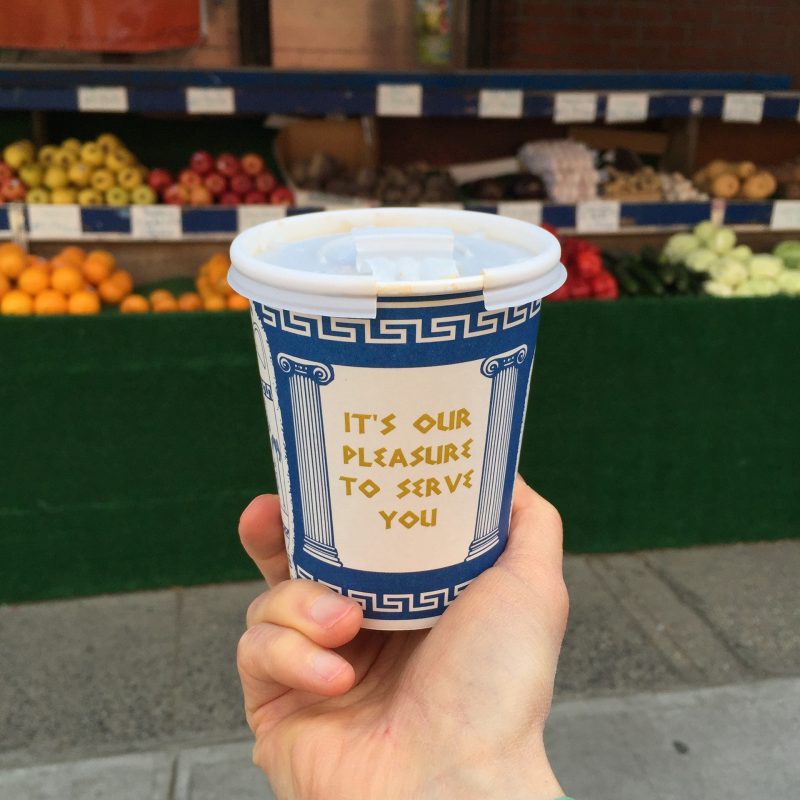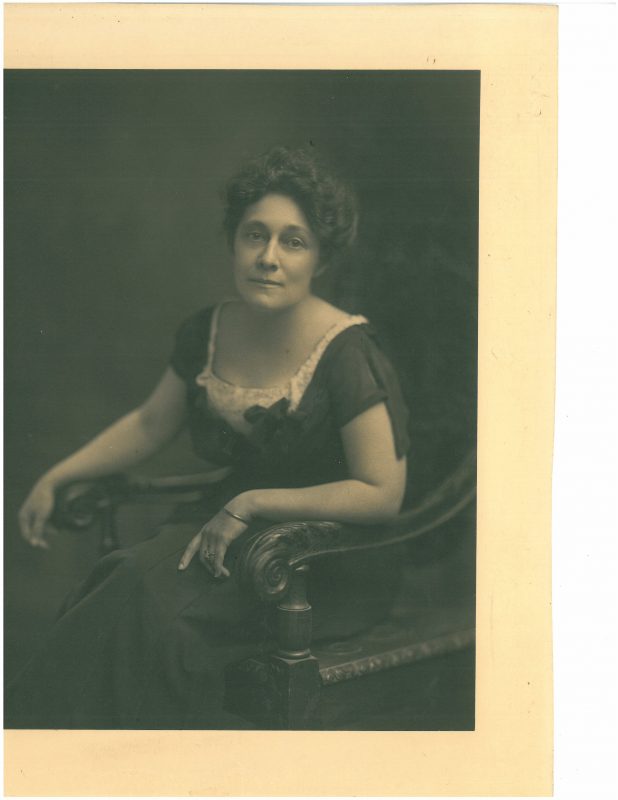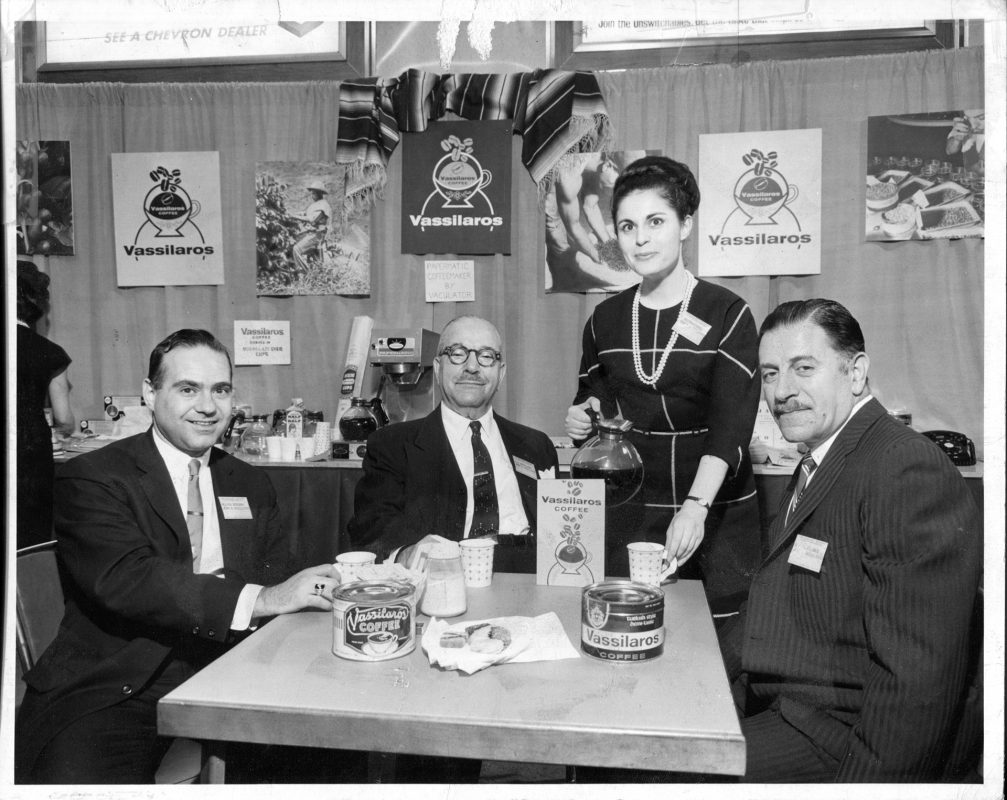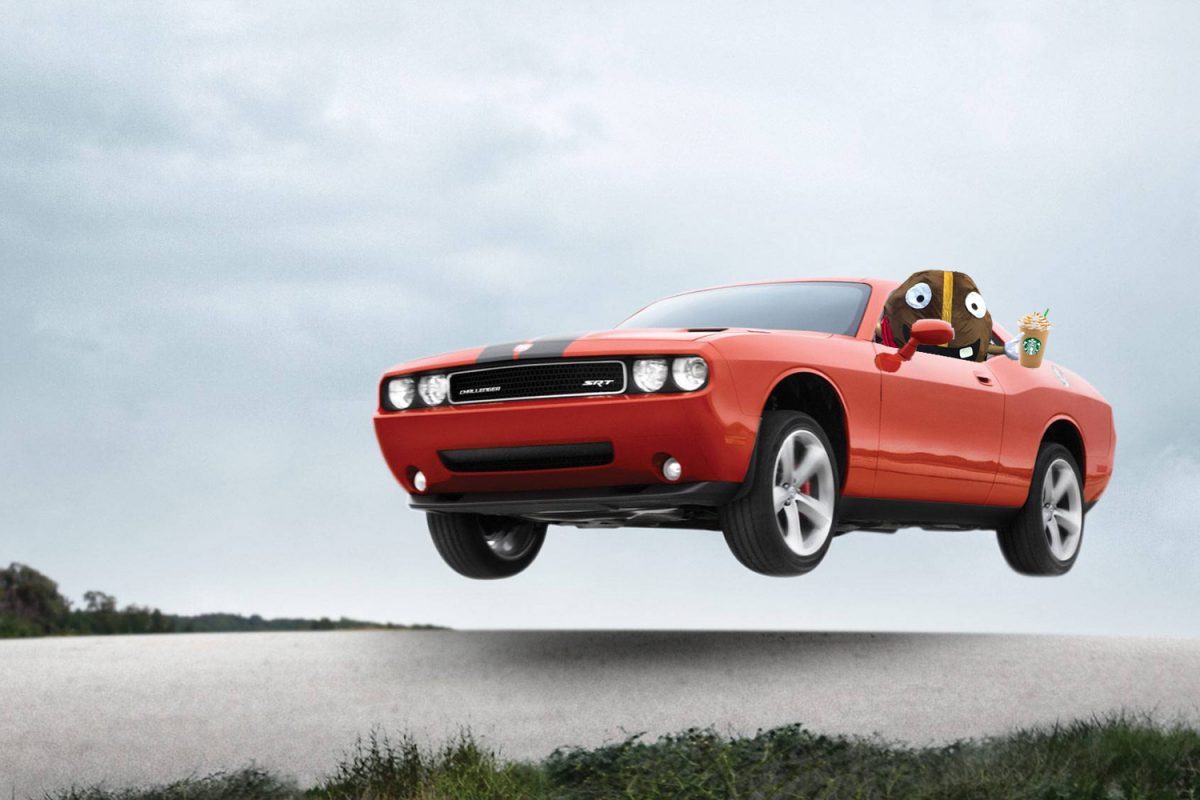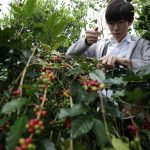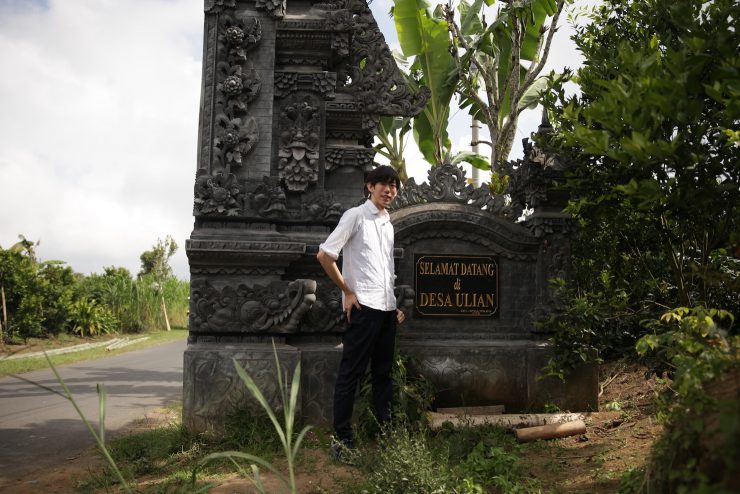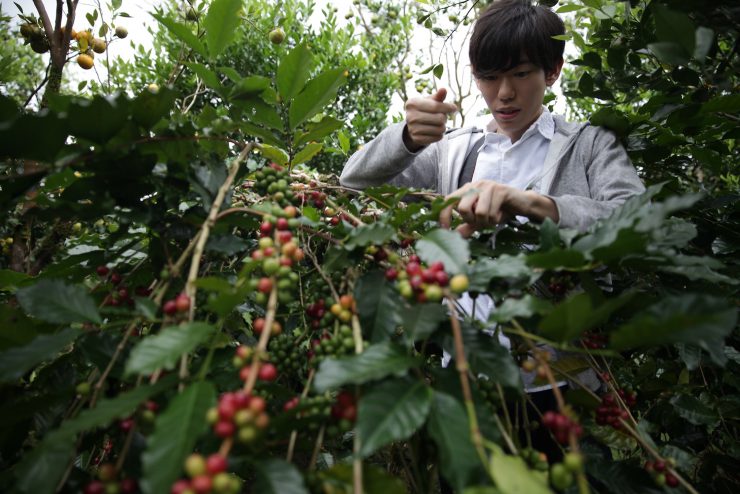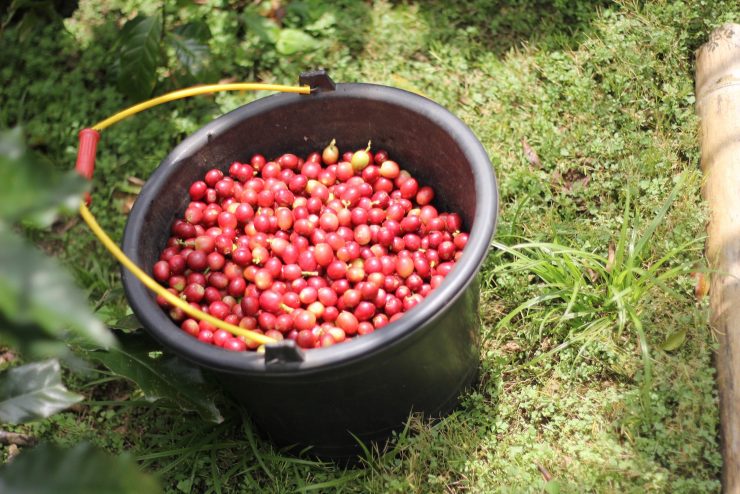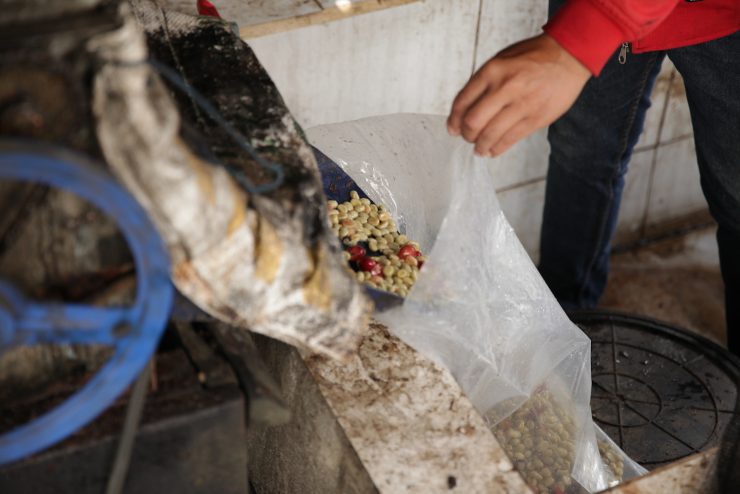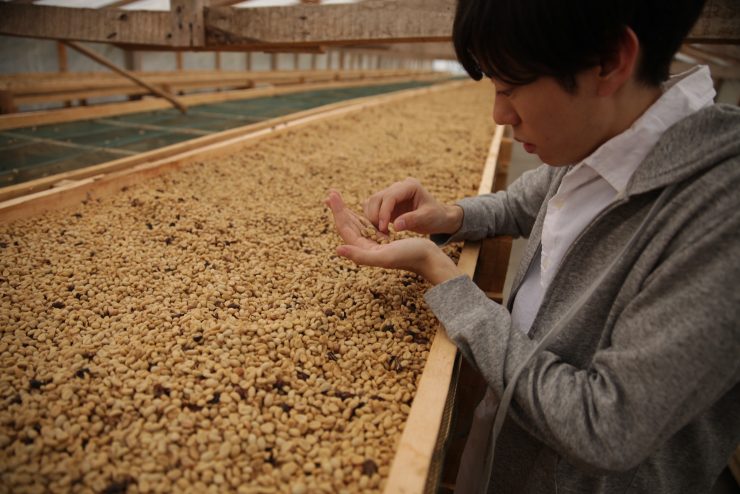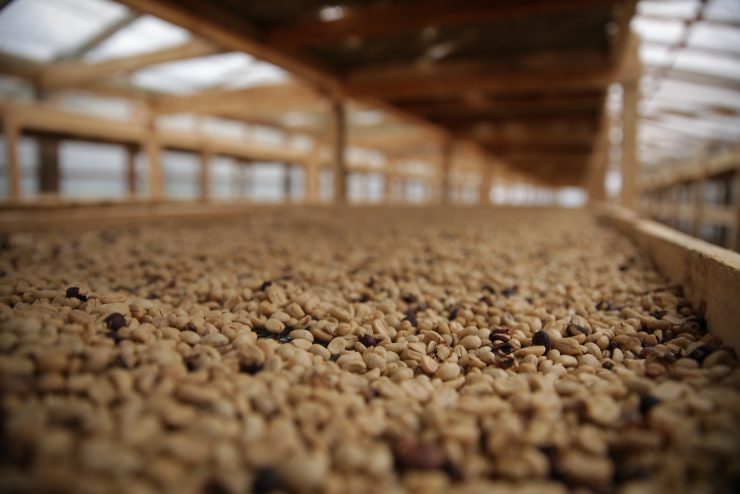In wine, varieties reign supreme. Everybody knows what a Merlot is, or a Chardonnay. But in the coffee world, they’re less understood. You might know of Geisha, but do you know the difference between a Bourbon and a Typica? Or why that matters?
So today, I’m giving you a crash course in coffee varieties. Get ready to learn why they matter, what a variety actually is, and what some of the main varieties you should know are.
SEE ALSO: VIDEO: Introducing Liberica, a Lesser-Known Coffee Species
 Yellow Bourbon ready to be planted. Credit: San Mateo Coffee
Yellow Bourbon ready to be planted. Credit: San Mateo Coffee
Why Are Coffee Varieties Important?
How important coffee varieties are depends on your role in the coffee supply chain: producer, barista, roaster, consumer…
If you’re a consumer, you might be wondering why you really need to learn another set of labels for your coffee. Is the variety really that important, compared to the country of origin, roast level, and processing method? And if it is important, why do only some coffee bags tell you about it?
The simple answer is that coffee varieties can affect the flavour of the coffee. Some, like Bourbon, are known for their sweet taste. Others, like Gesha/Geisha, are known for tea-like qualities.
But coffee flavour isn’t just about the variety: it’s also about the growing conditions, processing, and more. The uniqueness of a high-quality coffee is part of what makes this beverage so wonderful.
 Cherries from different coffee varieties. Credit: Anthony Auger for Caravela Coffee
Cherries from different coffee varieties. Credit: Anthony Auger for Caravela Coffee
Roasters, you need to know about varieties because they don’t just affect the flavour profile – they also affect how you roast.
Different beans will have different sizes: Maragogype is famously large, while Mokka is tiny. And since roasting is a physical transformation, how heat is transferred throughout the bean is of key importance. You need to understand the physical makeup of your coffee (especially if you’re blending).
And producers, varieties are of critical importance to you. Your choice will affect the flavour profile and potential cup score, the hardiness of the plant and its resistance to disease, its productivity, which altitude and temperature it grows at best, and more.
Another reason to care about varieties is that Arabica coffee has a worryingly low genetic diversity. This means it is more susceptible to disease and climate change – and could even theoretically become extinct in the future. Creating and/or finding more genetic variety is of key importance right now.
 Green to ripe coffee cherries
Green to ripe coffee cherries
Species, Variety, Cultivar… What Do These All Mean?
Now we know why varieties are important, let’s take a step back and look at what they actually are.
There are many different species of coffee – over 100, according to World Coffee Research (WCR) – but the main three are Arabica, Robusta, and Liberica. Specialty coffee shops rarely sell anything but Arabica, shunning Robusta for its harsher, more bitter taste – although some shops are making the case for Fine Robustas. Liberica is usually only consumed in the Philippines.
The category below “species”, when describing plants, is “variety”. Varieties refer to different variations within the species. For example, Caturra is a variety of Arabica while Nganda is a variety of Robusta. As for a cultivar, that’s a coffee variety that has been created by humans in an agricultural setting.
Another point that confuses many people is the difference between varietal and variety. Simply put, “variety” is a noun and “varietal” is an adjective. However, because language is almost as complex as coffee genetics, it’s possible to use “varietal” in a way that acts as a noun when discussing the coffee product rather than the plant (something called nominalisation).
But this is an article about coffee, not linguistics: it’s enough to say that the differences between “varietal” and “variety” are just grammatical.

Libérica plant. Credit: Herbert Peñaloza for 575 Café
Some Coffee Varieties You Should Know
There are many coffee varieties around the world, and we couldn’t hope to cover all of them in just one article. However, we’re going to take a quick look at some of the most famous or noteworthy Arabica varieties.
Typica
Typica coffee is one of the earliest and most important coffee varieties, having been around for centuries and engendered numerous other varieties. Notable Typica varieties include Java, Maragogype, and Timor Hybrid (more on that last one in a little bit).
You’ll find Typica in Central America, Jamaica, and Asia. The WCR label it as low-yield, high-quality, and susceptible to rust and pests. It’s often described as having a clean, sweet acidity.
Bourbon
A natural mutation of Typica, Bourbon is a high-quality, medium-yield coffee known for its sweet taste. It has, however, low resistance to leaf rust, coffee berry borer, and other diseases and pests. It’s commonly grown in Burundi and Rwanda, as well as throughout Latin America.
Why should you know about Bourbon? For the same reasons why you should know about Typica: its early appearance in the “coffee variety tree” makes it a common variety that has also engendered numerous other varieties.
 Bourbon cherries. Credit: Mapache Coffee
Bourbon cherries. Credit: Mapache Coffee
Ethiopian Heirloom
While most Arabica coffee varieties come from Typica or Bourbon, coffee originally comes from Ethiopia – and Kew Gardens have established that the country holds 95% of coffee’s genetic diversity.
You’ll often see “Ethiopian Heirloom” written on a bag of coffee; this indicates that it was probably grown wild or in a lightly cultivated garden.
Timor Hybrid
The Timor Hybrid is a controversial coffee, since it’s a (spontaneous) Arabica-Robusta hybrid. Robusta is a more, well, robust coffee species: it offers hardiness and resistance to coffee leaf rust in exchange for a less appealing flavour and aroma profile.
As a result, this unique coffee has been used in many cultivars, particularly Catimors and Sarchimors. Catimors are a group of Caturra and Timor Hybrid crosses; Sarchimors a group of Villa Sarchi and Timor Hybrid crosses. Examples of these include Castillo, Colombia, and Marsellesa.
Specialty coffee buyers can be wary of any plant with a Timor Hybrid parentage – but some producers, especially those at lower altitudes, believe less risk is worth a potentially lower cup quality.
 Castillo Variety from Cauca, Colombia. Credit: Finca La Julia
Castillo Variety from Cauca, Colombia. Credit: Finca La Julia
Gesha/Geisha
Gesha/Geisha originated in the village of Gesha, Ethiopia, but remained under the radar until 2003 in Panama. Since then, Panamanian Geisha has become the industry’s most-famous coffee. With most coffee championship finalists using it, and a recent green bean auction price of US $601/lb, it’s become a byword for excellence – and exclusivity.
It has a distinctive profile: tea-like with a jasmine aroma, orange blossom and bergamot notes, delicate florals…
As for the plant, it grows best at high altitudes (WCR recommend above 1,400 m.a.s.l.), is low-yielding, and can be delicate. While it has earned high prices at auction, there have been horror stories of producers growing it outside of Panama only to see their plants die in incompatible climates and soil.
SEE ALSO: Geisha Coffee According to a 4th Generation Panama Producer
 Ripe coffee cherries
Ripe coffee cherries
F1 Hybrids
F1 hybrids are varieties that have been produced in laboratories by WCR in an attempt to create high-quality, rust-resistant, and high-yielding options for producers. Notable F1 hybrids include Centroamericano, which has seen recent success in the Nicaraguan Cup of Excellence, and Starmaya.
One of the most important points about F1 hybrids, for producers, is that they are created in laboratories: their germinated seeds will not necessarily possess the same great qualities. For this reason, WCR advises that producers only buy from reputable nurseries.
For more information on F1 hybrids, read our in-depth article here.
 Going from green to ripe
Going from green to ripe
Caturra
A natural Bourbon mutation, Caturra is a dwarf tree with an average yield, average quality, and average bean size – in fact, the WCR description of an average yield is “Caturra-like”. It is susceptible to rust and pests, and commonly grown throughout Brazil and Latin America. I’ve included it here because of how common it is.
Catuai
Catuai is a Mundo Novo and Caturra cross that shares many of the same characteristics as Caturra: average yield, average quality, average bean size, susceptibility to rust and pests, and dwarf status.
 Green coffee cherries
Green coffee cherries
This is only an introduction to the wonderful world of coffee varieties. There are many more that deserve attention: Pacas, Pacamara, Maracaturra, Rume Sudan, Laurina, SL-28, SL-34… The list goes on and on.
Producers, pick your coffee varieties carefully. Do your research: understand the demands of each one, and the risks that come with it. When planting a new variety, consider starting slowly, with only a small portion of your farm.
As for you, coffee lovers, take the time to taste as many varieties as possible. Pay attention to how they vary. Compare different varieties grown in the same region – or the same variety grown across different regions. As you start to learn more about how the variety can affect your cup, your appreciation of coffee will only grow.
Written by Tanya Newton.
Perfect Daily Grind
Want to read more articles like this? Sign up to our newsletter!
The post Geisha vs Bourbon: A Crash Course in Coffee Varieties appeared first on Perfect Daily Grind.
from RSSMix.com Mix ID 8200593 https://www.perfectdailygrind.com/2017/08/geisha-vs-bourbon-crash-course-coffee-varieties/

